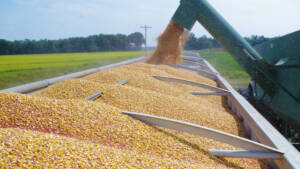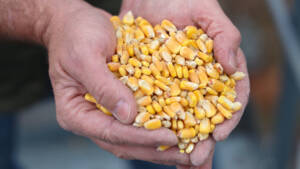Farm Bill Programs Boost Ag Exports
Betty Resnick
Economist
Chad Smith
Associate News Service Editor, NAFB

photo credit: AFBF Photo, Mike Tomko
Betty Resnick
Economist
Chad Smith
Associate News Service Editor, NAFB
One of the many ways the farm bill supports farmers and ranchers is by funding market development programs. Chad Smith has more on another program farmers are missing out on without a new farm bill.
Smith: With the September 30 expiration of the current farm bill, many important agriculture programs are on hold, including several trade promotion programs. Betty Resnick, an economist for the American Farm Bureau Federation, says Title III programs generate outstanding returns for farm bill investments.
Resnick: Title III is often called the trade title, and it accounts for less than half a percentage of overall farm bill spending. Half of that goes to an aid program called Food for Peace, which uses U.S. commodities to do capacity building, and the other half goes to export market development. These export market development programs have major bang for their buck, and a 2022 study found for every dollar spent on these programs, an additional $24.50 of agricultural exports resulted.
Smith: Resnick says that Title III programs promote a wide range of commodities.
Resnick: These programs benefit all of agriculture. That's one of my favorite parts about them. Over 70 organizations representing different products were awarded grant funding in 2024. This hugely diverse mix ranges from big commodities like corn and soy to smaller ones like hops, ginseng and cranberries. As cranberries are really only grown in North America, export development dollars are used to educate consumers on how to incorporate them into their diet in culturally-relevant ways and on their many, many health benefits.
Smith: She says agricultural trade is essential to the overall ag economy.
Resnick: About 20 percent of all U.S. ag production is exported overseas and there’s also $2 of domestic economic activity created for every dollar of ag exports. So, ag trade is important both for our sector and the economy at large.
Smith: For more information, go to fb.org/marketintel. Chad Smith, Washington.
What We're Saying

AFBF Congratulates Sen. Klobuchar on Ag Committee Leadership Position
Dec 23, 2024
READ MORE

U.S. Farmers Get a Much-Need Win Against Mexican Corn Import Decrees
Dec 23, 2024
READ MORE

Farm Bureau Applauds Congress for Full Passage of Continuing Resolution
Dec 21, 2024
READ MORE

Trade Panel Affirms Safety of American-Grown Corn
Dec 20, 2024
READ MORE
Trending Topics
VIEW ALL